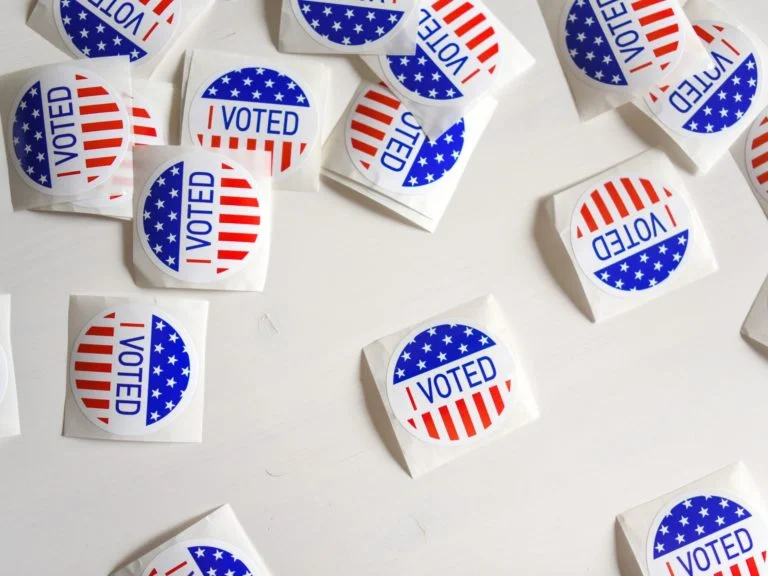The face of America is changing — Gen Z is the most multicultural generation to date. We’ve explained in a previous post why your general market message isn’t making the cut (because it fails to include the unique cultures, values, languages, communication styles, and media consumption habits of millions of multicultural Americans).
But just because you understand how important a multicultural marketing strategy is doesn’t mean that it’s easy to create one and land among the best diversity ads out there. To put it all in context, here are a few multicultural marketing examples from brands that got their multicultural marketing campaigns right.

What is diversity marketing?
Diversity marketing refers to any marketing strategy that recognizes the differences within the subgroups of a target market, including: age, gender, disability, religion, ethnicity, and sexual identity.
Multicultural marketing, more specifically, refers to a marketing strategy that recognizes the differences in culture and ethnicities of a target market.
Successful inclusive marketing campaigns aim to break advertising norms by highlighting people or groups that may be under- or misrepresented. Accurate representation allows for your target consumers to feel seen, heard, and understood — and enables them to trust your brand and personally identify with your products.”
To truly maximize the impact of your campaign, it’s essential to go beyond representation. By shedding light on the challenges faced by minority groups and showcasing their invaluable contributions to society, your brand not only amplifies their voices but also positions itself as a genuine, empathetic ally.
-
Building Loyalty: When minority groups see themselves accurately and respectfully depicted, it fosters a sense of loyalty and appreciation towards your brand. They feel recognized and valued, which encourages stronger brand affinity.
-
Creating Emotional Connections: Establishing your brand as an empathetic ally strengthens emotional bonds. This connection is crucial for long-term loyalty and can turn consumers into brand advocates who share your values.
By integrating these elements, your multicultural marketing campaigns can benefit both the minority group and your brand, creating a win-win scenario that resonates on a deeper level.
Challenges Multicultural Audiences Face that Should be Acknowledged in Multicultural Marketing Campaigns
In multicultural marketing campaigns, understanding and addressing the unique challenges minority groups face is crucial.
- One major challenge is representation. Many campaigns fail to reflect the diversity and authenticity of the communities they aim to reach, resulting in a sense of exclusion or misrepresentation.
- Another challenge is the language barrier. Minority groups often speak languages other than the dominant language of the region, which can lead to communication gaps if not properly considered. Developing content in multiple languages or incorporating culturally relevant idioms can help bridge this gap.
- Cultural sensitivity is also essential. Campaigns must respect cultural norms and values, avoiding stereotypes that might alienate an audience. Understanding what resonates within a particular culture can enhance credibility and engagement.
- Access to resources and opportunities is a significant issue, as many minority communities may face economic disadvantages. Campaigns that offer genuine value, such as educational content or community support initiatives, can make a positive impact.
- Finally, trust and loyalty are crucial to focus on. Minority groups may have historical reasons to distrust mainstream marketing, making transparency and consistency key to building and maintaining relationships.
By addressing these challenges thoughtfully, multicultural marketing campaigns can become more inclusive and effective.
Keep reading for some of the best diversity marketing examples — and why they work.
Related reading: 3 Examples of Hispanic Ad Campaigns That Nailed It
Target - "Bring Home Support"
Target is another brand that has championed diversity at every level — demonstrated by this multicultural marketing advertisement, “Bring Home Support”.
This advertisement is a powerful example of effective multicultural advertising, as it not only celebrates diversity but also emphasizes the importance of supporting local communities.
“Bring Home Support,” the video by Target, showcases the company’s commitment to promoting minority-owned businesses and products within their stores. This advertisement is a powerful example of effective multicultural advertising, as it not only celebrates diversity but also emphasizes the importance of supporting local communities.
One of the key strengths of this ad is its focus on representation. By featuring minority-owned businesses and their products, Target sends a strong message of inclusivity. It acknowledges the diverse backgrounds and cultures that make up our society, making customers from different ethnicities feel seen, valued, and included. This approach helps build a deeper connection between the brand and its diverse consumer base.
Moreover, the ad aligns with the growing demand for conscious consumerism. In today’s world, consumers are increasingly mindful of the impact of their purchases. By highlighting the support for local and minority-owned businesses, Target taps into this consumer sentiment and positions itself as a socially responsible brand. This resonates with customers who prioritize making meaningful contributions to their communities through their shopping choices.
Nike - "Someday We Won't Need This Day"
Nike has long excelled in diverse advertising, showcased by the Nike Pro Hijab for Muslim female athletes, adaptive activewear for people with disabilities, and plus-size athletic wear. Among various multicultural marketing campaigns, ‘One day we won’t need this day’ stood out. It supports International Women’s Day and envisions a future where the day is unnecessary due to full acceptance and equality.
The impactful 1-minute video features diverse women in sports and emphasizes Nike’s inclusive approach. All models and sports stars of different ethnicities are clad in Nike’s clothing, reinforcing their brand purpose and support for consumers’ aspirations.
Nike’s strength lies in their consistent commitment to diversity and inclusion. Nike’s inclusivity is ingrained in their identity — going far beyond a checkbox. Their authenticity stems from aligning brand purpose with values, evident in their campaigns, stores, and online presence.
Adobe - "When I See Black"
Adobe has always prided itself on being the tool for creators, and this ad focuses on the next generation of Black creators and how they see themselves.
“When I see Black? I see power.” The ad highlights the work of twelve Black creators: Esther Luntadila, Crystal Kayiza, Temi Coker, Barry Yusufu, Devin Wesley, Aurélia Durand, Shani Crowe, Yannis GuiBinga, Asia Hall, Lawrence Agyei, Ismail Zaidy and Joshua Kissi. Each respond to the prompt over the soundtrack of Gregory Porter’s “Revival”. The powerful conclusion? “Black creativity can’t be painted in a single stroke.”
In a statement from Adobe, Anne Lewnes, executive vice president and chief marketing officer says, “Seeing creators like yourself, especially for this next generation, is absolutely crucial. We are proud to be celebrating the vibrant spectrum of creativity that exists in the world, because we all benefit when more perspectives are shared.”
Coca Cola - “America Is Beautiful”
This 2014 pre-Superbowl multicultural advertising campaign example from Coca Cola provides an excellent example of diversity marketing done well. It features a culturally and racially diverse cast singing a multi-language rendition of “America the Beautiful” to represent the changing face of America.
The ad begins with shots depicting the wide array of areas in America — the Pacific Ocean, Chinatown in New York City, the plateaus of Utah — striking a nostalgic tone as it painted a picture of diverse communities from all over the country. In the background, different voices sing “America the Beautiful” in different languages. Following its launch, the ad became the #1 trending topic on Facebook following the Superbowl and a prime example of successful cross cultural advertising.
Read next: Hispanics Spend More Than Other Americans on These 3 Things
Proctor and Gamble - “The Talk”
P&G ads do more than promote their variety of cleaning and toiletry companies – they use their platform to tell powerful stories and spread messages about equality, have difficult conversations, and discuss topics related to diversity and identity.
One of the best advertising campaign examples of their multicultural marketing is the 2018 Emmy-winning ad entitled, “The Talk”. Hard-hitting and relevant, the ad (corresponding with P&G’s “Black is Beautiful” and “Proud Sponsor of Moms” initiatives) depicts the universal talk African American mothers have with their children about racism.
One mother tells her son, “There are some people who think you don’t deserve the same privileges just because of what you look like. It’s not fair. It’s not.” Another mother tells her daughter that, “Beautiful for a black girl” is not a compliment. “You are beautiful, period,” she says.
The ad ends with text in all caps, stating, “LET’S ALL TALK ABOUT ‘THE TALK’ — SO WE CAN END THE NEED TO HAVE IT”. This ad doesn’t shy away from tough conversations – in fact, it opens the door on the closed-door conversations happening in African American families across the United States in order to connect with consumers.
P&G’s Global Communications Director, Damon Jones told AdAge in an interview that, “We know that bias is not just an African American issue. It’s an issue that takes on many shapes and forms, across gender, race, age, weight, sexual orientation, and more.”
Read next: 4 Strategies to Win with Your Year-End Giving Campaigns
Fenty Beauty - “Beauty for All”
Rihanna’s brand, Fenty, is all but synonymous with authentic inclusive marketing, created on the foundation that everyone woman is beautiful and should feel included. In 2017, Fenty Beauty launched 40 shades of foundation, and that has since grown to 50. Chaédria LaBouvier wrote in Allure that Fenty Beauty’s sheer number of foundation colors is “a statement that women of color deserve complex options”.
Rihanna shared that, “It’s important to me that every woman feel included in this brand.” Once this campaign launched, it had a ripple effect called “The Fenty Effect”, a movement calling for brands to challenge the status quo in advertising by creating ads that are diverse and inclusive.
Bumble - “Find Me on Bumble”
You don’t have to create a particular story in your multicultural campaign to nail multicultural marketing. Sometimes, a winning multicultural strategy entails showing off your wide range of real-life customers. That’s exactly what Bumble’s “Find Me on Bumble” campaign did, through highlighting and celebrating a number of their inspiring and diverse users in the New York City area.
The video begins by saying that, “Every connection you make on Bumble is an opportunity to meet someone who can impact your life. Inspiring people are everywhere. We wanted to celebrate them.”
What follows are short clips of Bumble’s highlighted users sharing bits and pieces of their stories, including a political operative, an entrepreneur, an opera singer, and a model/activist. At one point, a dentist says, “I love that there’s such a variety of different people here. Living in New York, you still get to meet people from all over the world.”
This campaign is a great example of how a brand can market its existing diversity as one of its biggest assets. Instead of relying on stock imagery or models, Bumble highlights the real group of people you can find on its platform.
Read next: The Power of Print in Political Advertising
Adidas “Here to Create”
“Calling all creatives.” The Adidas ad cuts to a roundtable of well-known, diverse celebrities including Pharrell Williams, Aaron Rodgers, Lionel Messi, Von Miller, and many more.
“I think what we’re all trying to do is leave a mark.” In this advertising campaign example, Adidas quite literally brings masters of their crafts to the table to talk about the interplay between creativity and diversity. “We’re all creators, related by a mindset. It’s not about borders, gender, or race. We’re here to create”. And that’s what Adidas is able to successfully tap into with this digital marketing campaign — the mindset that unites people across industries, gender, race, politics, sexual orientation, age, and ability.
How Can Brands Ensure Their Multicultural Marketing Campaigns Are Accurate and Authentic?
Creating an authentic multicultural marketing campaign goes beyond just crafting the right message. It requires genuine understanding and representation of diverse cultures. Here’s how brands can achieve that:
1. Build a Diverse Team
Start by assembling a team that reflects the cultures and communities you wish to engage. Team members with firsthand experience and cultural insights are invaluable. They can help ensure your campaigns resonate genuinely with different audiences. A diverse team not only fosters empathy but also prevents potential missteps that could arise from cultural misunderstandings.
2. Engage in Active Listening
If your team lacks representation for certain groups, expand your outreach. Connect with individuals from these communities—whether through your professional network, community organizations, or personal contacts. Conduct interviews to understand their perspectives and challenges. This will provide invaluable insights and help keep your campaign grounded in reality.
3. Validate Through Consultation
Before launching your campaign, involve trusted advisors from the cultural groups you are targeting. Invite them to review your concepts and strategies to identify any potential missteps or inaccuracies. This consultation process, akin to a focus group, allows for constructive feedback and ensures that your campaign message aligns with the intended audience’s cultural sensibilities.
4. Conduct Rigorous Testing
Don’t stop at internal consultations. Conduct thorough testing of your campaign across different platforms and focus groups. This step should include verifying that all elements—from visuals to language—are culturally sensitive and portray the intended message clearly. Adjusting based on direct feedback can help in refining the campaign to better suit your intended audience.
5. Continuous Learning and Improvement
Multicultural marketing is not a one-time strategy but an ongoing commitment. Stay engaged with cultural trends and conversations. Measure the impact of your campaigns and be open to learning from successes and missteps. Adopting a mindset of continuous improvement will keep your marketing efforts relevant and respectful.
By integrating these strategies, brands can craft multicultural marketing campaigns that are not only accurate but also genuinely connect with diverse audiences, enhancing brand loyalty and trust.
There’s a fine line between a multicultural marketing campaign that resonates with and influences your target audience, and one that offends and alienates them. Contact us today for your customized multicultural marketing strategy.




